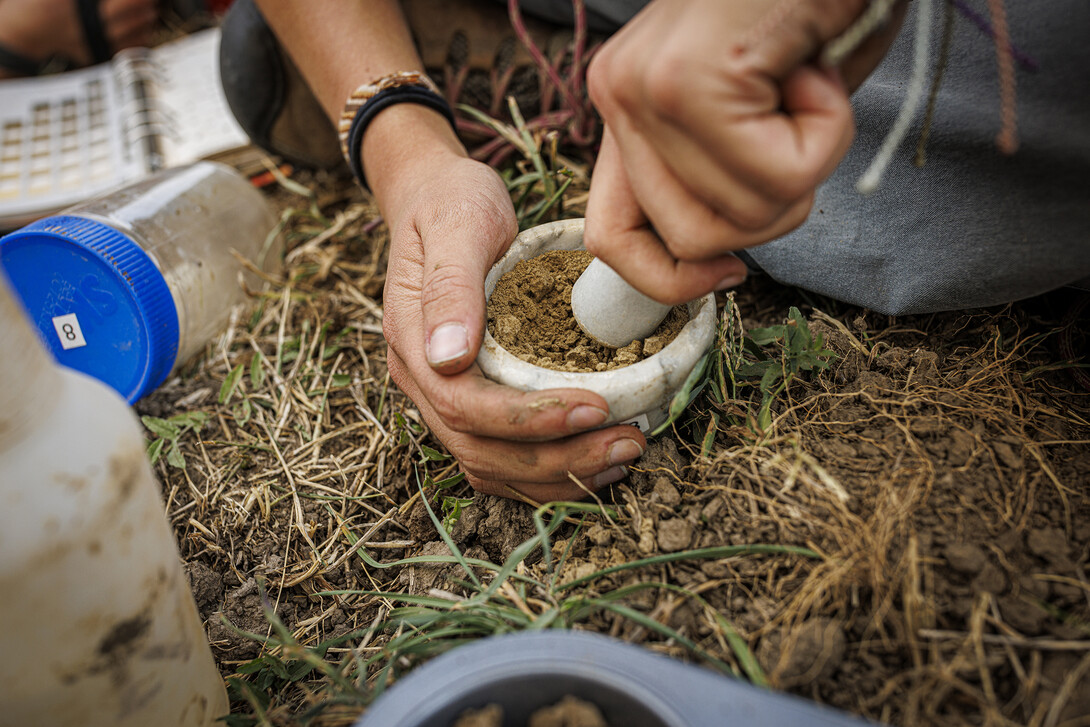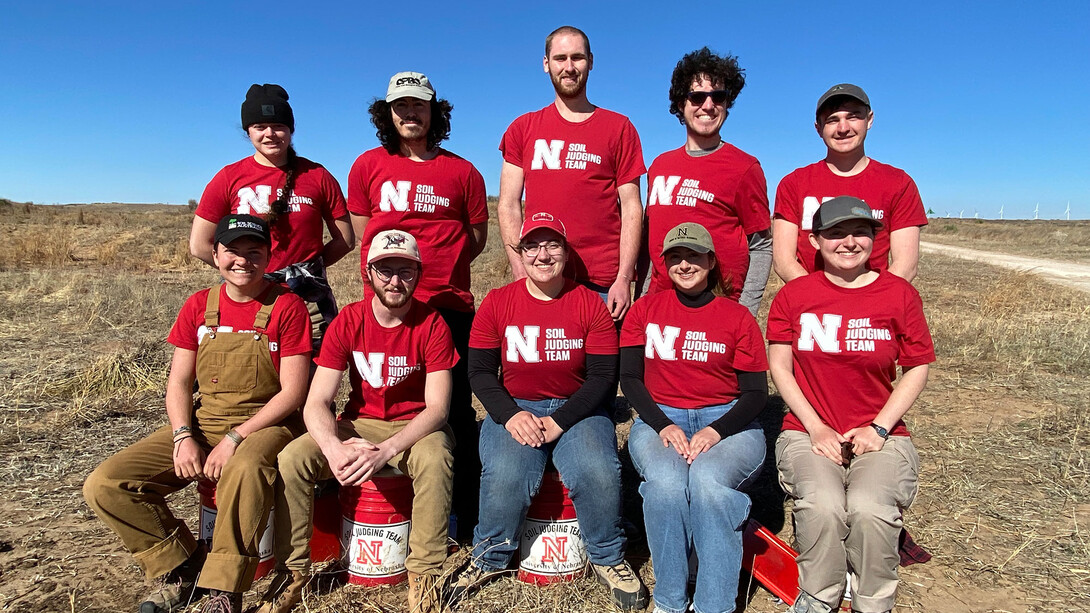
The University of Nebraska–Lincoln Soil Judging Team took fourth place at the National Collegiate Soil Judging Contest, held March 26–31 near Woodward, Oklahoma. The Soil Science Society of America sponsors the competition annually and Oklahoma State University was the 2023 host.
Nebraska has ranked in the top 10 either as a team, overall or by an individual, in the last three in-person national contests — 2019, 2022 and 2023. The Nebraska team, which placed fourth overall, includes students from the Department of Agronomy and Horticulture and the School of Natural Resources. Team members are Stephanie Kluthe, Sean Glasshoff, Mason Rutgers, Johnathan Kelly, Jack Krebs, Will Hernandez, Mason Schumacher, Charlotte Brockman, Julianna Cañedo and Rachel Clarkson.
Rutgers, a plant and landscape systems major, and Jack Krebs, an environmental science major, placed 6th and 9th individually this year. Students and teams earn awards for the individual portion and as a team overall. Scores from both individual and team portions are used to determine overall team rankings.
Soil judging is an educational experience that allows undergraduate students to competitively evaluate soil’s physical properties and local site characteristics and interpret these evaluations into land-use recommendations. In addition, soil judging can be a way to gain valuable hands-on experience evaluating soils in the field, which is essential for a soil scientist, agronomist or land manager.
“From a coach/instructor viewpoint, I see students walk away from each contest with better collaboration and communication skills, a stronger knowledge base of soil and landscape relationships, and a deeper appreciation for the skill and dedication of field-based scientists,” Becky Young, coach, said. “It’s also amazing to watch them develop a sense of appreciation and attachment for otherwise middle-of-nowhere, unassuming places in the world.”
Young, an assistant professor of practice in agronomy and horticulture, teaches Soil 153 Soil Resources, Soil 279 Soil Evaluation and Soil 379 Advanced Soil Evaluation courses. In addition, she has coached the soil judging team for nine years, six of which she has co-coached with Judith Turk, a pedologist in the Conservation and Survey Division of natural resources.
Nebraska Soil Judging Team member Mason Rutgers said all the content from his other university classes connects and makes sense when he’s soil judging.
“Soil judging has given me a holistic view of soils that I couldn’t have gotten in a classroom,” Rutgers said. “I’ve always been interested in all topics within soil science, including nutrient management, cropping systems and hydrology. Soil judging allows me to study all these as evidenced through soil profiles.”
Rutgers believes these experiences allowed him to think about soils through a wide lens and better trained him as a soil scientist — able to consider how soils vary across small changes in the landscape.

At the national contest, 154 students participated in the full team components and 92 students competed in the individual portion from 23 colleges and universities.
“Soil judging competitions are basically a bunch of nerds hanging out and arguing in soil pits from 7 a.m. to 5 p.m. for a week,” Rutgers said.
At the national competition, teams practice at soil pits — 5-foot-deep trenches dug into a field — at various locations to learn about the soils and landscapes of the area for four days. The team will look at about four soils daily, and each group is scheduled to be at a pit/site for 90 minutes each. During that time, team members do a practice description of the profile, describing each horizon’s texture, color and structure, the hillslope position of the soil, various erosion and site suitability interpretations, and other soil properties.
Afterward, the team will talk about the story of the soil with their coaches. Then the team corrects how they evaluated the soil with how the judges assessed it.
There are two competition days which consist of an individual portion on the first day at three contest sites and a team/group portion on the second day at two contest sites. Students must correctly identify, evaluate, classify and describe soil profiles in previously unseen soil pits and then rate the area for land use.
“While the competition aspect induces a lot of anxiety and can be miserable in freezing temperatures, soil judging is a fun experience,” Rutgers said. “Everyone there has a passion for learning more about soil science. I’ve met some of my best friends through soil judging, and they’re a group that will always make the long days in the field worth it.”







